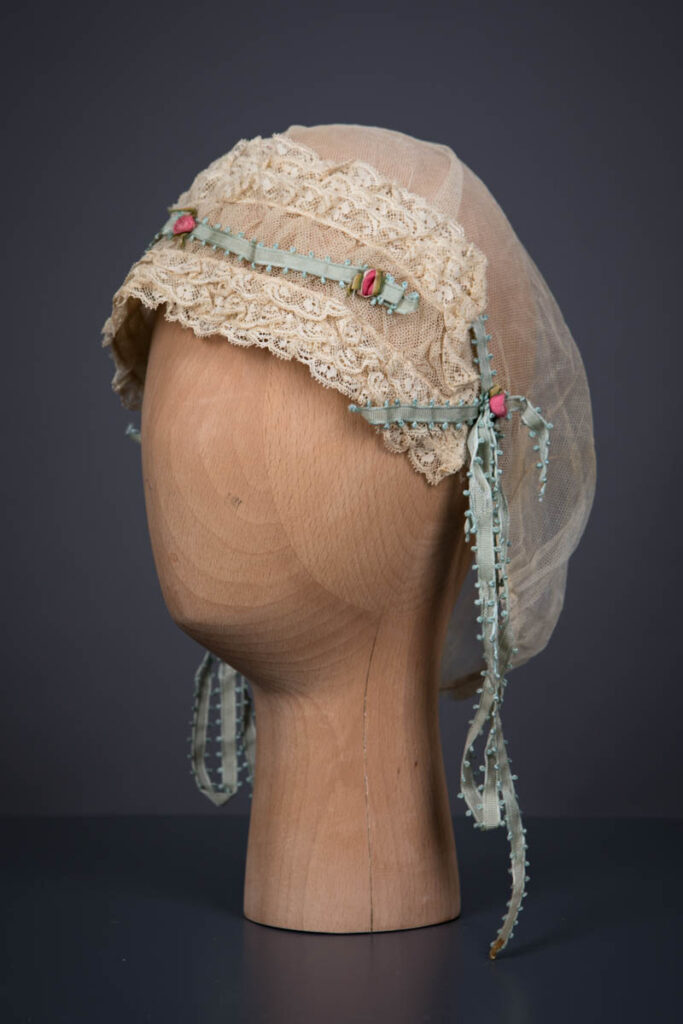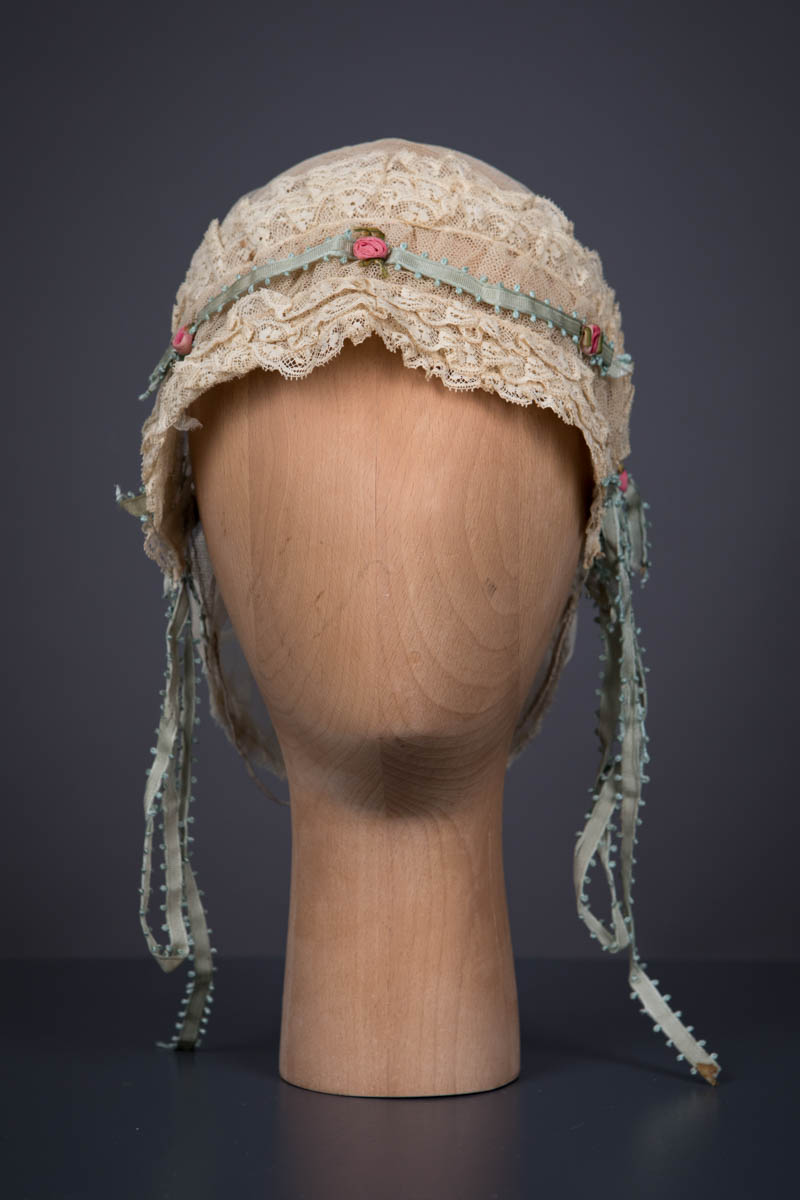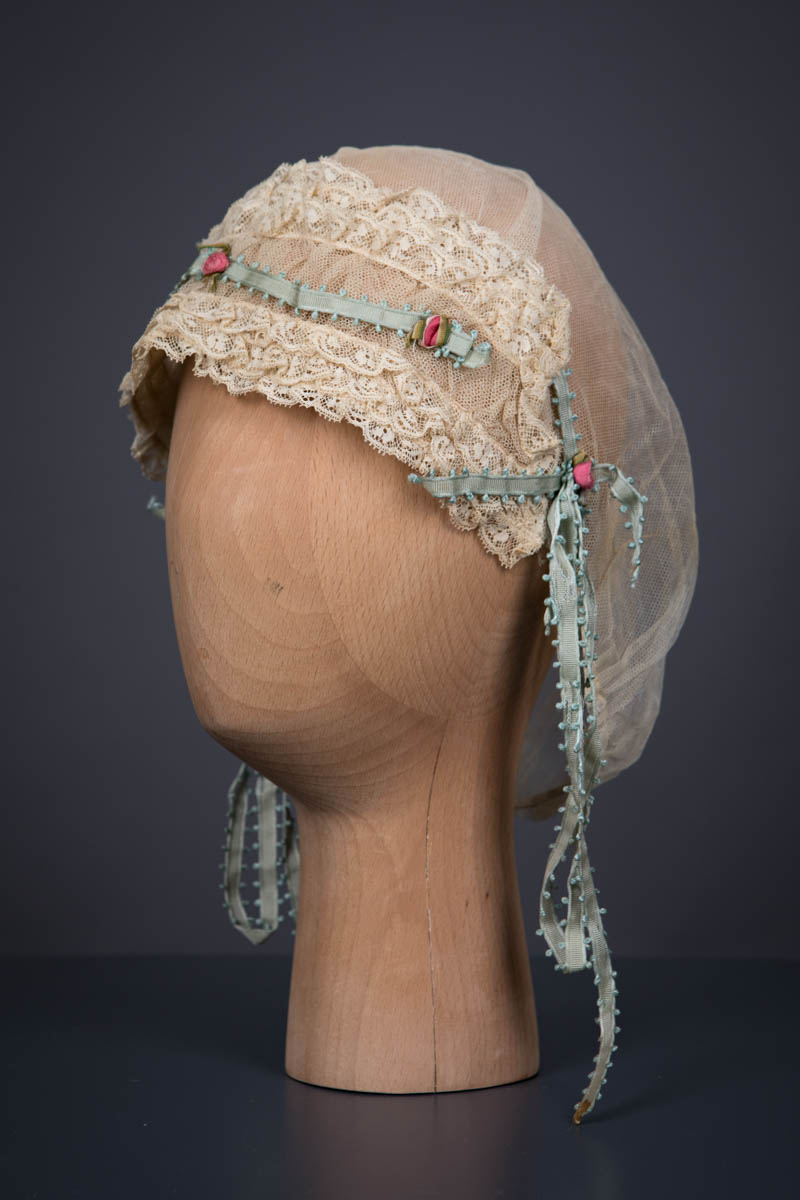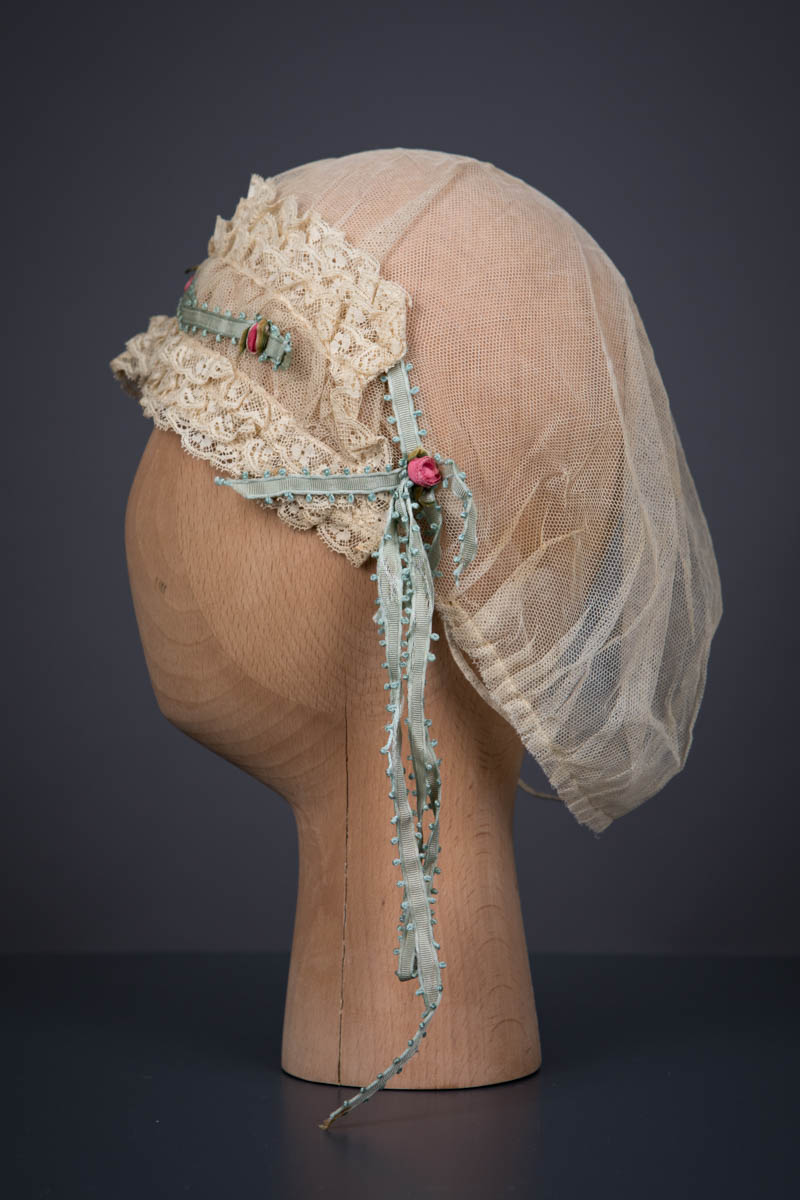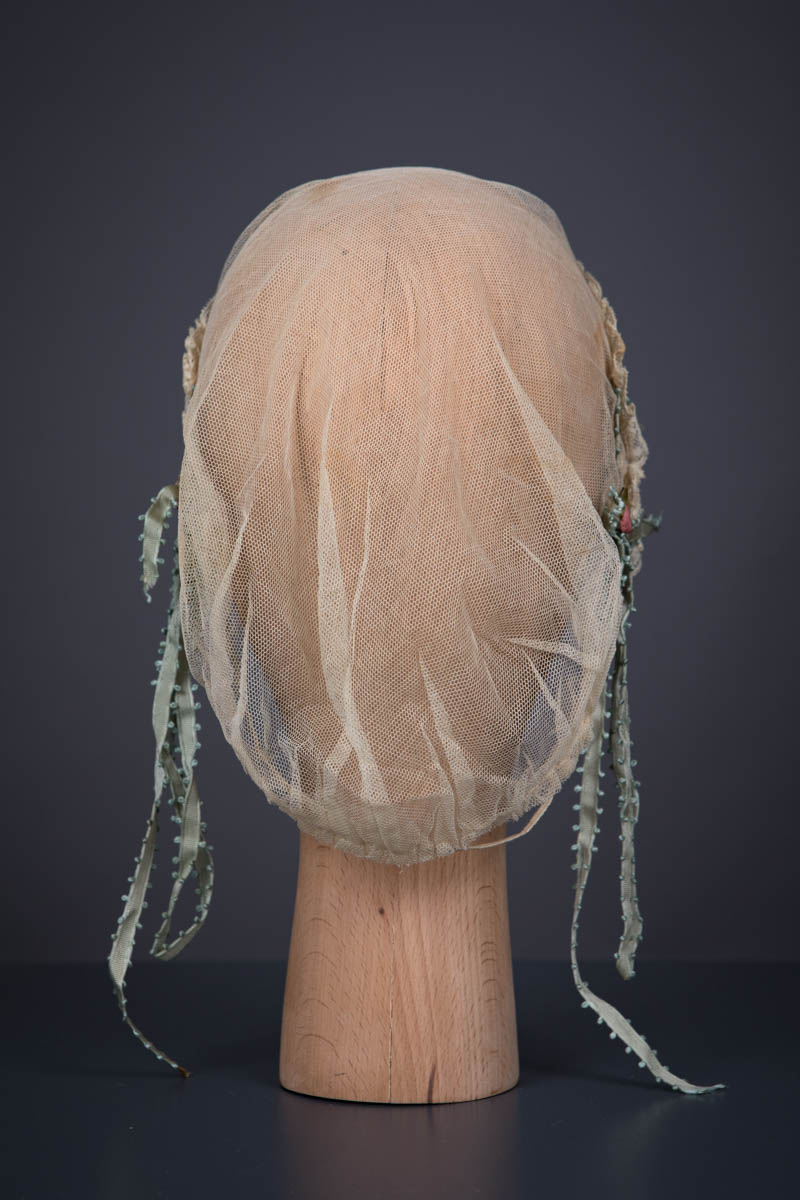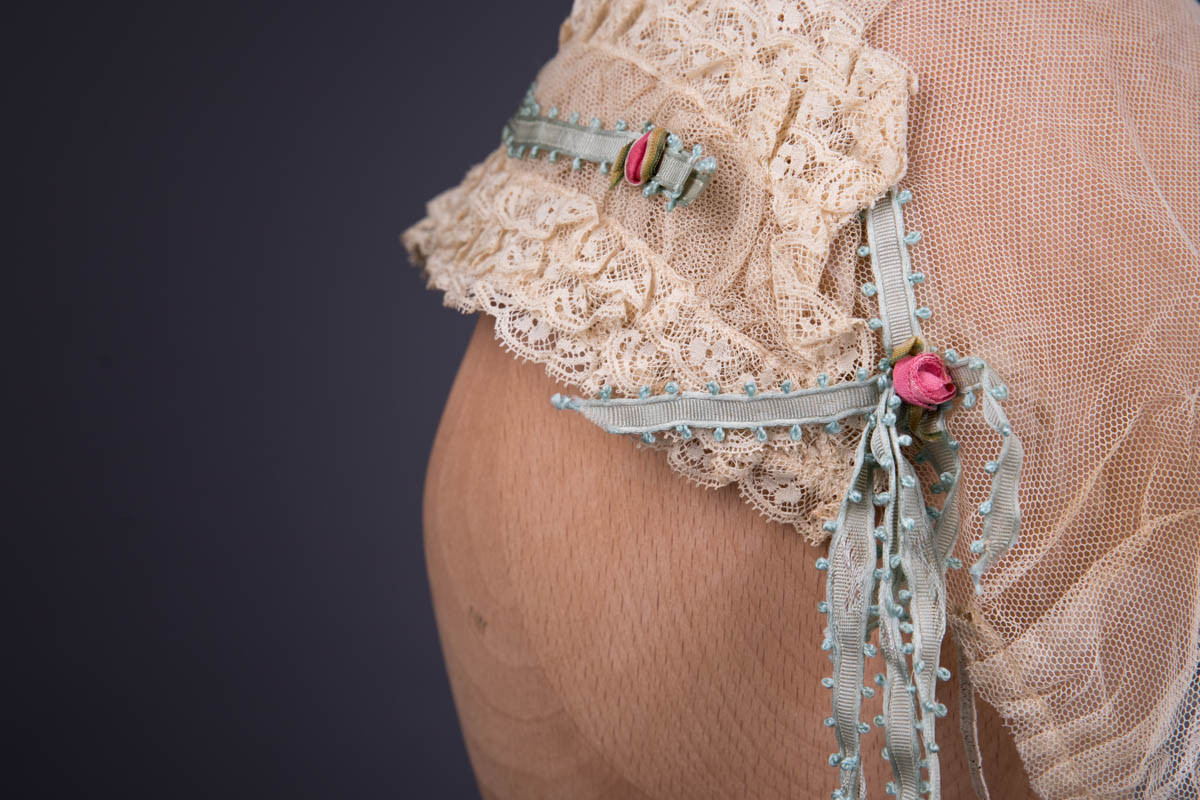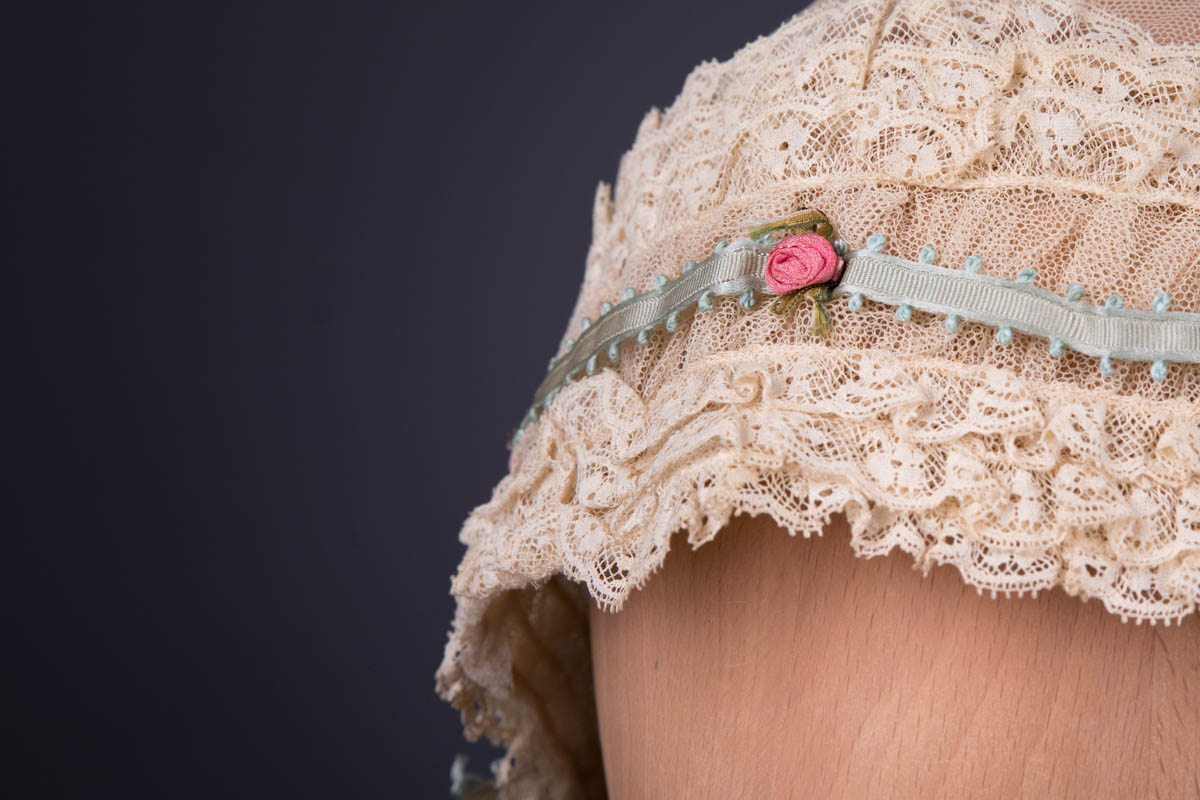Date: c. 1920s
Origin: Unknown
Fabric: Cotton bobbinet tulle, machine lace, silk ribbon
Brand: Unknown
A boudoir cap of cotton bobbinet tulle, lavishly embellished at the front of the cap with tiers of machine lace trim, blue picot edged ribbon, and small ribbonwork rosettes. The blue ribbon forms bows on either side of the cap, with the loops and tails hanging over the wearer’s ears. The rear of the cap has a channel stitched into the tulle that contains elastic. Originally, this would have pulled the cap flush against the wearer’s head, but this elastic has now perished and so the cap hangs loose.
The boudoir cap is a type of lingerie headwear, most commonly worn during the nineteenth to early twentieth centuries. It was originally worn over undressed hair, worn in the privacy of the boudoir alongside nightwear. In the 1910s and 1920s, it would be commonly worn to protect shorter hair styles during sleep. As the designs became more and more elaborate towards the 1930s, it began to be considered more of a decorative hair net. Like other forms of lingerie, boudoir caps were usually made in fine fabrics such as lace, tulle and satin. Embellishment was often profuse, with techniques such as ribbonwork being particularly commonplace.
From the collection of Karolina Laskowska
